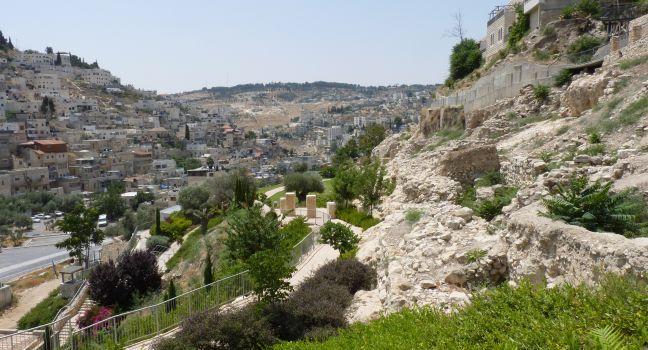By turns an ancient Roman port city, Byzantine capital, and Crusader stronghold, Caesarea is one of the country's major archaeological sites and a delightful place to spend a day of leisurely sightseeing among the fascinating ruins. You can also browse in souvenir shops and art galleries, take a dip at the beach, snorkel or dive around a submerged port, and enjoy a seaside meal. Caesarea is an easy day trip from Haifa, Tel Aviv, or even Jerusalem. A good strategy is to start at the Roman Theater, at the southern entrance. After exploring, you can then leave through the northern entrance. If you're short on time, enter from the north for a quicker tour of the site. At either of the two entrances to this intriguing site, pick up the free brochure and map.
Entry to the Roman Theater is through one of the vomitoria (arched tunnels that served as entrances for the public). Herod's theaters—here as elsewhere in Israel—were the first of their kind in the ancient Near East. The theater today seats 3,600 and is a spectacular venue for summer concerts and performances. What you see is largely a reconstruction: only a few of the seats of the cavea (where the audience sat) near the orchestra are original, as are some of the stairs and the decorative wall at the front of the stage.
The huge Herodian Amphitheater is a horseshoe-shape stadium with sloping sides filled with rows of stone seats. It's most likely the one mentioned by 1st-century AD historian Josephus Flavius in The Jewish War. A crowd of 10,000 watched horse and chariot races and various other sporting events here some 2,000 years ago. Up the wooden steps, you see the street's beautiful and imaginative mosaic floors in the bathhouse complex of the Roman-Byzantine administrative area.
King Louis IX of France built the walls that surround the Crusader City. The bulk of it—the moat, escarpment, citadel, and walls, which once contained 16 towers—dates from 1251, when the French monarch spent a year pitching in with his own two hands to help restore the existing fortifications. As you enter the southern wall gate of the Crusader city, you see the remains of an unfinished cathedral with three graceful apses.
At the observation point, you can gaze out over the remains of Herod's Port, once a magnificent sight that writers of the day compared to Athens' Port of Piraeus. An earthquake devastated the harbor in AD 130, which is why Crusaders utilized only a small section of it when they conquered the city in 1101.
In the harbor area, don't miss the Time Trek. Inside, you meet 12 of Caesarea's fascinating historic personages—among them Herod the Great, Rabbi Akiva, and St. Paul. These realistic-looking, larger-than-life figures answer questions about their lives in Caesarea. If you climb the stairs of the nearby squarish stone tower of the re-created fortress on the pier, you can view three-dimensional animations on giant screens that explain the amazing construction of the port.
East of the northern entrance to the site, a fenced-in area encloses Caesarea's Byzantine Street. During the Byzantine period and late Roman times, Caesarea thrived as a center of Christian scholarship. In the 7th century, Caesarea had a famous library of some 30,000 volumes that originated with the collection of the Christian philosopher Origen (185–254), who lived here for two decades. Towering over the street are two headless marble statues, probably carted here from nearby Roman temples. The provenance of the milky-white statue is unknown; Emperor Hadrian might have commissioned the reddish figure facing it when he visited Caesarea.
A wonderful finale to your trip to Caesarea, especially at sunset, is the beachfront Roman Aqueduct. The chain of arches tumbling northward before disappearing beneath the sand is a captivating sight. During Roman times, the demand for a steady water supply was considerable, but the source was a spring about 13 km (8 miles) away in the foothills of Mount Carmel. Workers cut a channel approximately 6½ km (4 miles) long through solid rock before the water was piped into the aqueduct. In the 2nd century, Hadrian doubled its capacity by adding a new channel. Today you can walk along the aqueduct and see marble plaques dedicated to the troops of various legions who toiled here.




